Efficient Ways to Grow and Care for Oxalis
When you grow and care for Oxalis it allows you to develop a bond with the plants, fostering a sense of mindfulness and tranquility as you tend to their well-being. Watching the leaves unfurl, the flowers bloom, and the plant flourish under your care can evoke a sense of joy and pride in your gardening skills.
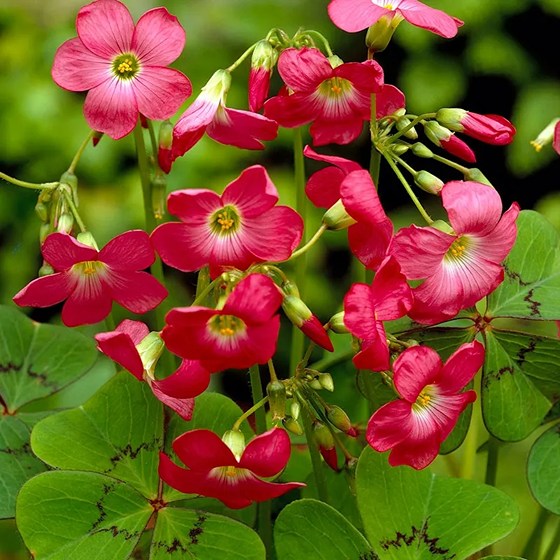
The oxalis genus is a diverse group of plants consisting of hundreds of species. Within this genus, there is a wide variety of plant types, including annuals, perennials, and even tropical oxalis species. These plants exhibit various growth habits, with some forming bulbs while others spread vigorously, leading to the formation of dense colonies.
Although many oxalis species boast beautiful flowers, they are primarily cultivated for their foliage. The leaves of these plants come in a range of attractive colors, such as purple, burgundy, pink, green, and silvery gray.
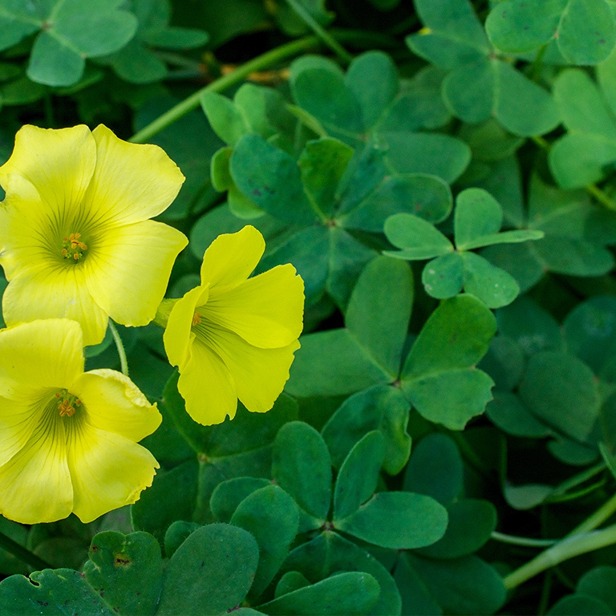
The flowering of oxalis plants is characterized by small blossoms composed of five delicate petals, each exhibiting intricate details on their inner surfaces. These blossoms often start as tubular flowers that unfurl to reveal slender stripes and dark-colored throats. The color palette of the blooms includes shades of pink and white, while certain species feature yellow and orange blossoms. For example, the Oxalis versicolor species showcases flowers resembling peppermint candy, primarily white with a red edge on the backside, resulting in a twisted appearance as the petals unfurl.
It’s important to note that many oxalis plants contain toxic compounds that can be harmful to both humans and animals. Therefore, it is advisable to keep these plants away from areas where children and pets frequently play.

Plant Profile: Oxalis - A Versatile and Colorful Genus
Characterized by its vibrant flowers and attractive foliage, Oxalis is a versatile genus that encompasses various plant types, including annuals, bulbs, houseplants, and perennials. With a moderate height and width ranging from 6 to 12 inches, these plants can add a delightful touch to any garden or indoor space. The flowers of Oxalis come in a range of striking colors such as orange, pink, white, and yellow, while the foliage exhibits captivating hues like blue/green, chartreuse/gold, gray/silver, and purple/burgundy.
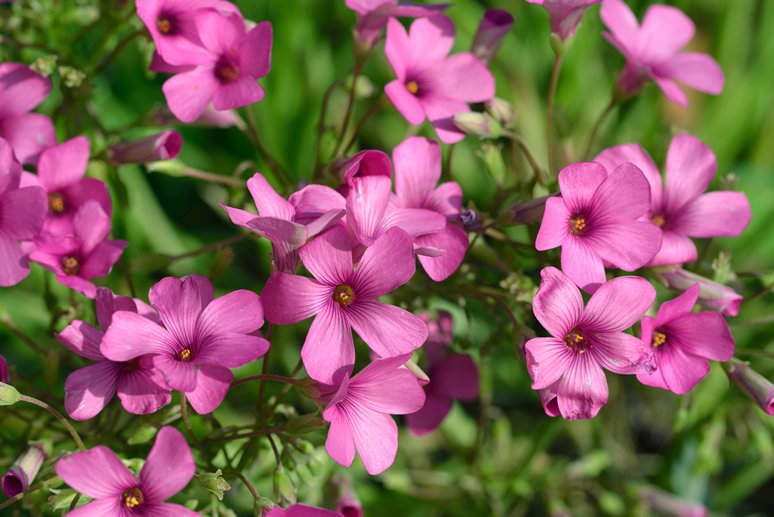
Oxalis offers a long blooming season, showcasing its floral beauty during fall, spring, summer, and even winter. These plants possess special features that make them highly desirable for cultivation, including their suitability for containers and low maintenance requirements. With hardiness zones spanning from 5 to 11, Oxalis can thrive in a wide range of climates.
In addition to their aesthetic appeal, Oxalis plants are problem solvers. They exhibit tolerance to drought conditions, making them a resilient choice for water-conscious gardeners. Some varieties of Oxalis also serve as excellent groundcover, providing an attractive and functional solution for landscaping needs. To successfully grow and care for Oxalis, ensure you provide it with well-drained soil, partial sunlight, and regular watering.
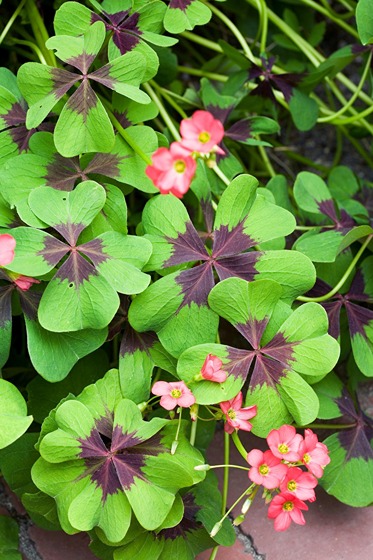
Ideal Planting Locations for Oxalis
Oxalis, also known as wood sorrel, can be successfully planted in specific conditions that promote their growth. It is recommended to choose moist and well-drained soil for planting oxalis, avoiding excessively wet areas. Most oxalis plants thrive in areas with partial sun to partial shade, although there are some species that can tolerate full sun. Depending on their growth habit, oxalis plants can serve different purposes in the landscape.
For instance, oxalis plants that spread through rhizomes are particularly beneficial as groundcover options in gardens. They have the ability to create dense colonies and provide effective coverage. On the other hand, oxalis species that form bulbs are better suited for garden beds and borders, where they can showcase their unique beauty and add visual interest.
In addition to their suitability for outdoor planting, certain oxalis species can also be cultivated as attractive houseplants. However, it is important to consider their specific requirements. In general, oxalis plants are cool-season plants and prefer environments that are not exposed to direct sunlight or excessive heat. Therefore, when choosing a location for oxalis houseplants, it is advisable to place them in an area that offers indirect sunlight and maintains moderate temperatures.

Planting Oxalis: Techniques and Timing
To ensure successful growth, it is essential to follow proper techniques and timing when planting oxalis. Here are some guidelines to consider:
1. Best Time for Planting:
The optimal period to plant oxalis is during the spring season. This timing allows the plants to establish their roots and thrive in favorable growing conditions.
2. Soil Preparation:
Prepare the soil before planting oxalis by loosening it and incorporating compost. This process improves soil structure and facilitates excellent drainage, which is crucial for the health of nursery plants or bulbs.
3. Planting Depth:
When planting rhizomes or bulbs, ensure they are placed at a depth of only 1.5 inches. This shallow planting depth provides the right conditions for proper growth and development. For nursery-grown plants, dig a hole slightly larger than the nursery container. Remove the plant from its container and plant it at the same depth as it was in the container.
4. Backfilling and Soil Compaction:
After placing the plant or bulbs in the hole, backfill it with soil, gently pressing down with your hands to eliminate any trapped air bubbles. This helps establish good soil-to-root contact, promoting nutrient uptake and overall plant health.
5. Spacing Considerations:
If you are planting multiple oxalis plants, refer to the plant nursery tag or label for recommended spacing guidelines. Following the suggested spacing ensures adequate room for each plant to grow and prevents overcrowding, which can impede their development.
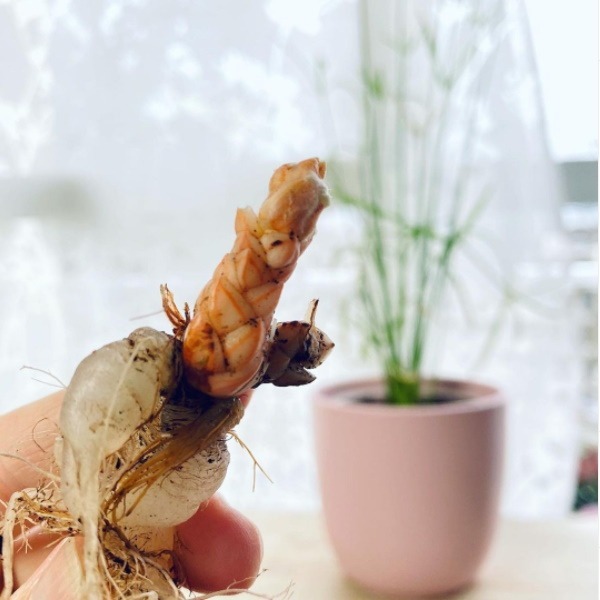
Tips for Caring for Oxalis Plants
To ensure the well-being of your oxalis plants, it is important to provide appropriate care based on their specific species and natural habitat. Here are some guidelines to help you in caring for oxalis plants:
Researching Species-Specific Needs:
Since growing conditions can vary among the numerous species within the oxalis genus, it is beneficial to research the origin of your specific oxalis plant. Understanding its natural habitat will provide valuable information about its preferred growing conditions. Some oxalis plants are native to alpine regions, woodlands, or tropical climates, each having distinct care requirements.
Light Requirements:
Oxalis plants generally display versatility in terms of their sun exposure preferences. The amount of sunlight required varies depending on the species. For instance, woodland oxalis species thrive in shaded garden settings and prefer less direct sunlight.
Soil and Watering:
All oxalis plants prefer well-drained soil. Many oxalis species, particularly alpine varieties, are sensitive to excess moisture and cannot tolerate standing water. On the other hand, woodland oxalis species tend to be more adaptable to typical garden conditions.
Dormancy Period and Watering:
Several bulbous oxalis plants go through a period of dormancy. The timing of this dormant phase may vary among species, but it often occurs during summer. During this period, it is crucial to withhold water to encourage dormancy and prevent bulb rotting.
Temperature and Humidity Considerations:
Tropical oxalis species are not frost-tolerant and thrive in warmer climates, particularly during the summer months. Alpine oxalis plants are typically adapted to cool-growing conditions and may experience a dormant period during the summer. Woodland oxalis species prefer shaded garden settings but can tolerate standard garden conditions. Most oxalis plants can adapt to various humidity levels, but some may benefit from higher humidity, especially in hot regions or indoor settings, which may require occasional misting.
Fertilization:
During the growing season, which generally occurs in spring and sometimes fall, fertilize oxalis plants on a monthly basis. Avoid fertilizing during the dormant period or winter months. Utilize a fertilizer with a balanced 10-10-10 NPK ratio, either in slow-release granular form for outdoor plants or as a liquid flower fertilizer following the product instructions for indoor plants.
Pruning Requirements:
Oxalis plants typically do not require extensive pruning. After the flowers have bloomed, you can trim back the flower stalks to the soil line. To prevent reseeding, you can also trim back the flower stalks before they fully bloom.

Potting and Repotting Oxalis Plants
When it comes to potting and repotting oxalis plants, there are certain considerations to keep in mind. Here are some guidelines to help you with this process:
Potting Requirements
Oxalis plants make excellent houseplants and tend to thrive when slightly rootbound. They prefer temperatures ranging from 65°F to 75°F, which are commonly found in most homes. However, they are not tolerant of warmer temperatures. When potting oxalis plants, use high-quality potting soil and ensure that it remains consistently moist but not overly wet.
Repotting
Over time, your oxalis plant may outgrow its container. However, oxalis plants are generally not bothered by being rootbound. If you choose to repot, it is advisable to wait until the plant enters its dormant period. During this time, carefully remove the plant from its current pot, taking care not to damage any bulbs or rhizomes. Choose a new pot that has drainage holes and is only slightly larger than the previous one. This allows for continued healthy growth without overwhelming the plant.

Pests and Problems
Similar to many other plants, oxalis can sometimes attract pests such as aphids, mealybugs, or whiteflies. These pests are usually more problematic when it comes to houseplants rather than those grown outdoors. If necessary, you can treat the plant with insecticidal soap or neem oil to control the infestation.
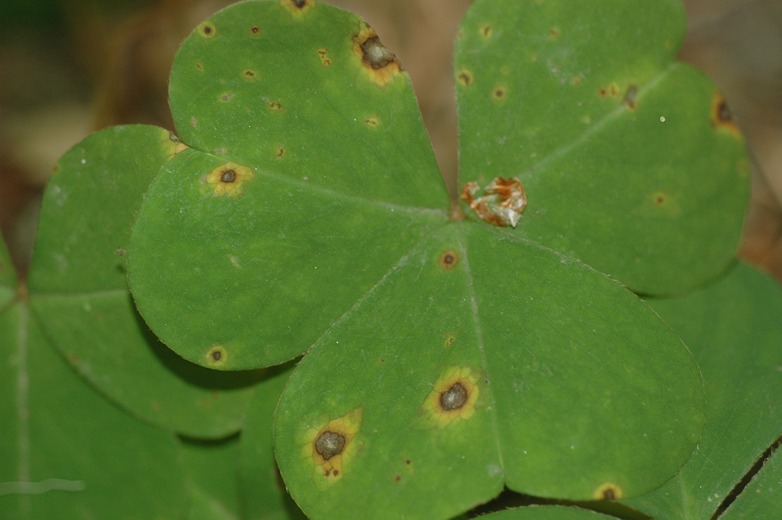
Aggressive Spreaders
Certain varieties of oxalis plants have a tendency to spread randomly and can become invasive if not properly contained. Gardeners should remain vigilant to control these aggressive spreaders and prevent them from taking over the garden. Regular monitoring and appropriate measures, such as trimming or removing excess growth, can help keep these plants in check.

Propagating Oxalis: Methods and Techniques
If you’re interested in propagating oxalis plants, there are a couple of straightforward methods you can employ. Here are the details on how to propagate oxalis through division or seed:
Division Propagation:
The most suitable time to divide oxalis plants is during their dormant period, typically occurring in the summer. Start by lifting the plant gently from the ground using a shovel or trowel. Remove some of the soil to expose the rhizomes or bulbs. Using your hands, carefully separate the rhizomes or bulbs, ensuring minimal damage. Immediately replant the divisions in their desired locations and water them adequately to support their growth.
Seed Propagation:
The seeds of most oxalis plants exhibit quick germination, typically taking 7 to 14 days. In early spring, prepare a well-draining bed or container with suitable soil. Space the seeds approximately an inch apart and cover them with a thin layer of soil measuring around 1/8 to 1/4 inch. Provide adequate watering to facilitate germination. Once the seedlings emerge, thin them out to the recommended spacing for the specific oxalis species. If you choose to start the seeds indoors, cover the container with a plastic bag and place it in a well-lit area. Once you notice signs of growth, remove the plastic bag.




